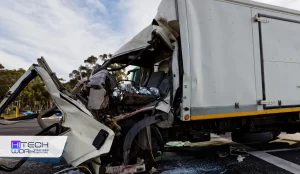Data center operators are hitting a wall. As server densities surge and workloads shift with little warning, traditional power setups are falling behind. Systems built for stability now create bottlenecks—slowing expansion, raising costs, and complicating maintenance. What used to be reliable is now too rigid for today’s demands.
Power delivery isn’t just about capacity anymore—it’s about adaptability. Static conduit layouts make even minor changes time-consuming and expensive. Operators need infrastructure that responds quickly, supports high-density environments, and doesn’t require major overhauls with every upgrade. The shift toward modular, scalable power systems is gaining momentum as facilities look for ways to stay flexible, minimize downtime, and keep up with fast-moving technology without tearing everything apart.
Why Static Power Infrastructures Are Failing High-Density Server Environments
Older power systems can’t keep up with today’s fast-moving data centers. Rigid conduit layouts make it hard to adjust, and upgrading them is often expensive and slow. For example, adding a new power feed to support additional server racks might require cutting into walls and pulling permits, which extends project timelines. This lack of flexibility causes delays and hurts productivity, while teams get stuck dealing with the hassle of updating outdated systems.
This flexible solution allows power taps to be moved quickly, making it easier to scale as computing needs grow—without major rewiring. With busway systems in place, data centers can adapt to shifting workloads and capacity demands, creating infrastructure that’s ready for change.
Design Flexibility Is Driving Busway Adoption in Modular Data Centers
Busway tracks are becoming popular in modular data centers because they can be configured in many ways. Unlike fixed systems, busways work with different layouts and help keep airflow open. That’s important in places focused on energy efficiency and cooling, where every inch matters when placing servers and equipment.
Hot-aisle containment setups pair well with modular power tracks, improving airflow throughout the space. These systems also support varying power needs, allowing operators to adjust as demands change. As technology investments shift, regularly reviewing power configurations can lead to more efficient energy use and stronger sustainability outcomes.
Cost Pressures Are Steering Operators Toward Reconfigurable Power Architecture
Energy and facility costs are rising, pushing data center operators to find ways to lower the total cost of ownership. Traditional systems often come with high long-term costs because they’re hard to install and maintain. Using resources wisely has become a priority since high costs can hurt profits and slow growth.
Busways offer a smart alternative. They install quickly and require less labor and material. Maintenance is easier and can happen without shutting things down, keeping operations running. Switching to this newer setup can lower expenses and improve system uptime. Regular reviews of how energy is distributed can reveal more ways to save and run more efficiently.
Safety and Compliance Are Getting Easier With Tap-Off Technology
Today’s busway systems help make data centers safer and more compliant with regulations. Built-in safety features like modern circuit breakers and real-time monitoring reduce the risk of mistakes. For example, fault indicators can pinpoint exactly where a short circuit occurred, helping teams respond faster. These features give operators and technicians peace of mind that their setup follows electrical rules.
These safety tools also make inspections and audits faster, easing the pressure on teams. With advanced monitoring, problems like overloaded circuits or unexpected power drops can be spotted right away, so downtime is reduced. Sticking to regular safety checks can help improve compliance and keep operations steady.
Tenant Turnover Is Forcing Colocation Providers to Prioritize Power Flexibility
Colocation spaces often shift as tenants come and go. Providers need power setups that can adjust easily to these changes, like adding or removing power feeds to match varying rack densities. Traditional wiring makes that difficult and slows down response times.
Busway systems help speed up these transitions. Operators can change setups without major rewiring, making life easier for both staff and clients. Temporary setups can be added quickly to support different projects. Choosing modular power systems helps providers improve how fast they respond and how satisfied clients are.
Old-school power setups aren’t just outdated—they’re costing time, money, and momentum. As server loads shift and client needs change, rigid systems slow teams down. Modular busway systems give operators the freedom to respond quickly, reduce downtime, and sidestep the headaches of complex rewiring. They’re not just easier to install—they’re built to adapt as your data center grows. Teams can reconfigure without delays, keep operations online, and avoid unnecessary disruptions. Upgrading power infrastructure doesn’t have to be disruptive. It just has to be smart. Start with a small section, test the results, and scale what works—before inflexibility turns into lost revenue.












